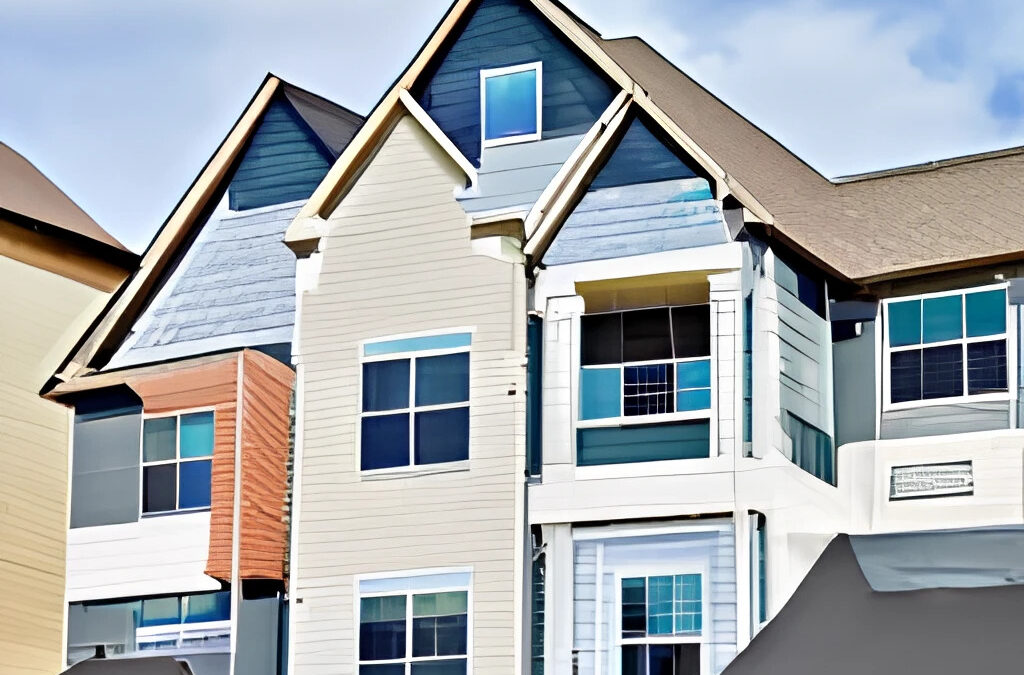As interest rates continue to rise, many real estate investors are wondering how this will impact their multifamily investments. While higher interest rates can mean higher costs for financing, there are still plenty of opportunities for those willing to do their homework and take a long-term view. In this post, we’ll explore the potential impact of rising interest rates on multifamily real estate investments and offer some strategies for success. So whether you’re a seasoned investor or just getting started, read on for some insights into this important topic.
The current state of interest rates and how they’ve been trending in recent years
Interest rates have continued increasing steadily in recent years due to increasing economic growth and inflationary pressures. It has been a slow but steady trend over the last couple of years, but earlier this year the Federal Reserve decided to keep interest rates unchanged. Despite this halt in increasing, the consensus is that higher interest rates are inevitable and we should prepare ourselves for further increasing rates down the road. As a real estate investor, it’s essential to factor increasing interest rates into your forecast when evaluating future investments.
How rising interest rates impact the cost of borrowing for real estate investors
As a real estate investor, higher interest rates can be daunting when it comes to the cost of borrowing. But the good news is that higher costs don’t equate to higher losses – if you stay disciplined and manage your cash flow wisely, you can still make successful investments despite higher borrowing costs. One way to do this is by actively searching for ways to lower your other operating expenses. Usually, every dollar saved can offset increases in borrowing costs, increasing profits as well as minimizing losses.
The different types of multifamily investments and how they’re affected by higher interest rates
Multifamily investments come in a wide variety of shapes and sizes, but they all have one thing in common – capitalization rate (cap rate). Cap rate is one of the most important metrics used to measure the long-term viability of multifamily investments. In short, it’s a ratio that measures the yield or return based on a property’s net operating income relative to its purchase price. As interest rates increase, the capitalization rate goes down, creating a situation where investors must adjust their strategy or risk losing out on potential profits. For smart real estate investors, higher interest rates aren’t necessarily a deterrent – but an opportunity. By doing our due diligence and learning how to navigate this new environment, we can unlock potential hiding inside multifamily investments even when capitalization rates are lower.
Strategies for mitigating the effects of rising interest rates on your multifamily portfolio
As a real estate investor, it’s important to stay on top of the changing mortgage climate in order to proactively mitigate the potential effects of rising interest rates. Although the current market is hovering near historic lows, financial institutions are beginning to raise rates, and now is the time to make sure you can keep your multifamily portfolio from being affected. One strategy could be refinancing existing loans while they’re still at low interest rates; another could be taking out shorter-term floating rate notes with some flexibility in refinancing or restructuring payments down the line if necessary. It may also pay off to diversify your financing options with different lenders and obtaining bridge loans that can provide temporary relief if needed in case of sudden hikes in local interest rates. The key is doing your research beforehand and having a plan set up so that you can quickly jump on strategies that will help protect your multifamily investment against unpredictable rises in interest rates.
What the future may hold for interest rates and the implications for multifamily investors
The future of interest rates is always a bit of a mystery for multifamily investors, but one thing is for certain – their implications can be significant. Whether rates continue to stay low or eventually increase as the economy rebounds, there are potential benefits and drawbacks for real estate investors. Low rates may entice new investors into the multifamily market, but continued low rates can also become overly competitive, driving up property values and rents. On the other hand, if interest rates rise in the future, it could limit the cost of capital and present opportunities to acquire undervalued properties; however, this could also decrease investor appetite and cause fewer buyers to enter the space. As multifamily investors look towards the future, they must carefully consider their goals in light of changes in interest rate trends.
Ultimately, as interest rates continue to rise, investors must carefully consider the different multifamily investments and devise strategies to mitigate the associated costs. That said, it is also important to remember that higher interest rates present an opportunity for investors to potentially earn greater returns on their investments in the long run. As such, experienced investors should stay attentive to changes in interest rate trends so they can proactively plan and adjust their investment strategies accordingly. There is no exact science when it comes to predicting future interest rate movements. However, with proper planning and understanding, multifamily investments can still be highly profitable in today’s changing landscape.



